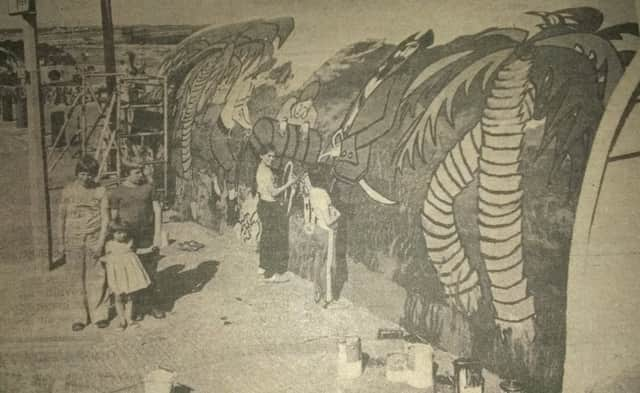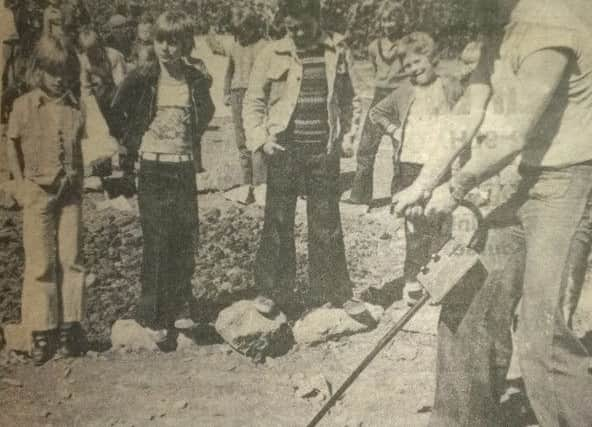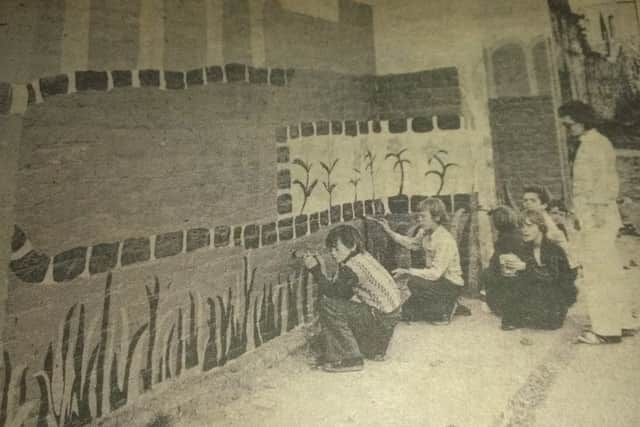Having fun with metal detectors and murals in 1978 Sunderland


The fact that it helped to brighten up derelict areas - and potentially allow youngsters to unearth exciting finds as well - was an added bonus.
Metal detectors were at the height of their popularity in the city.


Advertisement
Hide AdAdvertisement
Hide AdTake a stretch of waste ground. Add in a metal detector. Put a group of excited children into the mix and you have the perfect recipe for a great time.
Sunderland in 1978 was the place to be to look for potential buried treasure.
A campaign started to encourage city children to get involved in a community arts project.
The idea was that youngsters would search for hidden items with the detector. They would dig up the land and convert it from a derelict eyesore into a haven, and then paint nearby walls into a mural.


Advertisement
Hide AdAdvertisement
Hide AdThe areas dug up for metal finds were converted into little gardens and rubbish was carted away.
A great idea. Were you a part of it and what are your memories?
Within days of it starting, keen children at Monkwearmouth had uncovered coins, bottle and pieces of metal.
And some of the artefacts they had found were thought to have dated back more than 100 years. But what did you uncover 38 years ago?


Tell us more.
Advertisement
Hide AdAdvertisement
Hide AdOur report at the time said: “There is great excitement as the metal detector swings across a stretch of waste ground in Dundas Street.
“And when the bleep sounds out, warning of material several feet below ground, there is no shortage of willing hands to help dig it up.”
The Sunderland Echo played a hand in helping to ensure the project’s success.


Community arts project leaders Barbara Waters and Mike McCarthy put an appeal out through the paper for a metal detector.
Advertisement
Hide AdAdvertisement
Hide AdAnd it was the Sunderland branch of Currys which answered the call and loaned one indefinitely.
The 1978 report added: “Barbara and Mike have been working with groups of youngsters on the waste site between the shops in Dundas Street during the school holidays.
“It is hoped that the project will be extended so that the area can be transformed.
“Already, great inroads have been made into the site which was a typical demolition site eyesore.”
Advertisement
Hide AdAdvertisement
Hide AdThe great fun part of it all - aside from looking for treasure - was the chance for children to paint walls.
And after Barbara and Mike drew the outlines and helped with an overall colour scheme, it was down to the children to fill in the side of a shop wall with bright colours.
They came up with lovely pink and green floral scenes as well as archways.
Louis O’Neill was the community arts organiser for Sunderland Arts Centre and he was delighted with the way the project was going.
Advertisement
Hide AdAdvertisement
Hide AdIn 1978, he told the Echo how praise should go to all the people who had given their support by donating paint, materials as well as the metal detector.
The report at the time added; “He is also delighted with the transformation of the grey structures down on Roker blockyard.”
The whole scheme was funded by the Sunderland Recreation Department.
Over at the Roker site, youngsters were being directed by Paul Mcpartlin and Jayne Everard. They transformed concrete structures into bright murals with a nautical theme.
Advertisement
Hide AdAdvertisement
Hide AdA boathouse had a mural of a sailing ship on one side of it.
On the other, children got creative and painted a scene from Treasure island complete with Jim Hawkins and the pirates looking at a treasure chest.
It seemed appropriate.
Nearby play structures and a shelter were newly adorned with fish and the sea. And a once plain tunnel now had an octopus winding its way through it.
Our reporter at the time commented: “It is great to see energy being used on projects like this which we can all enjoy.”
Advertisement
Hide AdAdvertisement
Hide AdThere was talk of the project being extended because it was such a success. Was it?
Were you one of the children who got to transform a part of Sunderland.
If so, what are your memories. What did you manage to unearth with the metal detector?
Tell us more. Email [email protected]